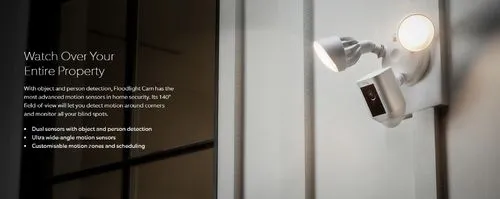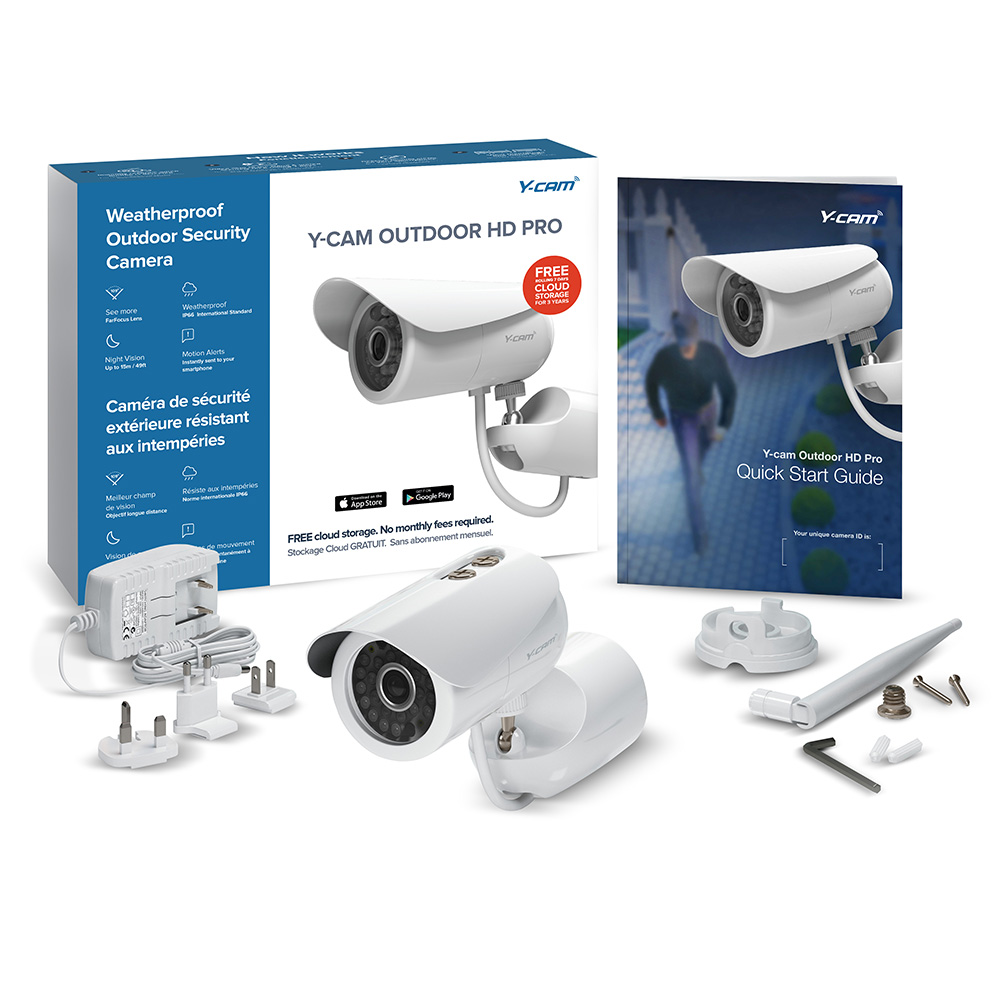The Impact of Smart CCTV on Crime Prevention and Detection

How Smart CCTV Systems are Revolutionising Crime Prevention and Detection
Smart CCTV systems are revolutionizing crime prevention and detection by providing advanced features that offer enhanced protection and peace of mind for homeowners. AI-powered analytics can detect potential criminal activity in real-time, allowing homeowners to respond quickly to potential threats. Additionally, smart CCTV can help prevent crimes before they happen by deterring criminals from committing offences in the first place.
Studies have shown a decrease in property crimes such as theft and vandalism with the installation of smart cameras. This is because the presence of these cameras serves as a deterrent to potential criminals. Knowing that they are being monitored and that their actions will be recorded can discourage them from attempting to commit a crime.
Moreover, smart CCTV systems can be programmed to alert homeowners when unusual activity is detected on their property. This allows them to respond quickly and effectively, potentially preventing a crime from occurring. AI algorithms make it possible to analyze activity patterns on a property and identify potential threats before they escalate.
Smart CCTV systems are transforming how we approach home security by providing advanced features that offer enhanced protection against potential threats. With continued advancements in this technology, homeowners can expect even greater security and peace of mind. Investing in a smart CCTV system is an effective way to deter potential criminals and protect your property around the clock.
The Role of Smart CCTVs in Public Safety: Privacy Concerns and Regulation
Smart CCTVs have become essential for public safety, but their use has raised privacy concerns. Proper regulation and oversight are necessary to address these concerns and ensure that CCTV technology does not infringe on individual rights.
Laws governing the use of surveillance technology in public spaces or private property vary depending on the country or region. However, most regulations require transparency around data usage, access, storage, and disposal. This means that individuals should be informed about how their data is used and who has access to it. Additionally, CCTV footage should be stored securely and disposed of appropriately to prevent unauthorized access.
Privacy concerns can be addressed by ensuring that CCTV systems are used only when necessary and for legitimate purposes. This means CCTV systems should not be used for indiscriminate monitoring or surveillance. Instead, they should be used to prevent or detect criminal activity.
Moreover, ensuring that individuals' privacy rights are respected when using CCTV technology is important. This can be achieved by limiting facial recognition technology and ensuring that CCTV cameras do not capture sensitive information such as biometric data.
Smart cities play a crucial role in public safety, but their use must be regulated to ensure they do not infringe on individual rights. By implementing proper oversight and transparency measures, we can ensure that CCTV systems are used responsibly and effectively for crime prevention and detection.
False Alarms Generated by Smart Cameras: Management Strategies for Law Enforcement Agencies
False alarms generated by smart cameras can lead to wasted police resources if improperly managed. Law enforcement agencies can implement several strategies to manage false alarms effectively. One of the most important strategies is training operators who monitor live feeds from smart cameras to accurately identify potential threats without jumping to conclusions or making assumptions based on biases or stereotypes. This training should include distinguishing between false alarms and actual threats and how to respond appropriately in each situation.
Another strategy is to implement a verification process for potential threats detected by AI-powered analytics. This process involves verifying the accuracy of the detection before dispatching police resources. False positives generated by AI-powered analytics could result in innocent people being wrongly accused or harassed, so it is crucial to ensure that the detection is accurate before taking action.
Law enforcement agencies should also consider implementing policies around the use of smart cameras, including when and how they are used and who has access to the footage. Transparency around these policies can help build trust with the community and ensure that using smart cameras is ethical and effective.
Managing false alarms generated by smart cameras is crucial for law enforcement agencies to prevent wasted resources and protect innocent individuals from being wrongly accused or harassed. By implementing proper training, verification processes, and policies around the use of smart cameras, law enforcement agencies can ensure that they are using this technology effectively while respecting individual rights and privacy.
Cost-effectiveness Analysis: Longterm Savings vs Upfront Investment Costs

Regarding smart CCTV systems, cost-effectiveness analysis is a crucial consideration. While significant investment is required upfront, the long-term cost savings due to reduced crime rates and increased efficiency for law enforcement agencies make it worth considering.
Several factors affect cost-effectivenesses, such as the size of the area being monitored, the number of cameras required, and the level of sophistication needed for analytics software. Businesses located in high-crime areas may experience benefits like reduced insurance premiums after installing CCTVs.
The effectiveness of smart CCTV systems depends on several factors, including camera placement, lighting conditions, and system maintenance. Regular review is essential to ensure that it is still necessary and proportionate.
Research studies show the impact of smart CCTVs on communities over time so that policymakers can make informed decisions about their continued use. Monitoring centres need adequate staffing levels so that all alerts are promptly handled.
Overall, while smart CCTV systems require an upfront investment, they can result in long-term cost savings due to reduced crime rates. Proper placement, maintenance, and oversight are necessary to ensure they are effective and used ethically.
Public Opinion: Divided Views on Surveillance Technology for Maintaining Public Safety
Public opinion regarding the use of surveillance technology is divided. Some see it as a necessary tool for public safety, while others raise concerns about civil liberties. Those in favour argue that surveillance technology can help prevent crime and assist law enforcement agencies in solving crimes. However, others believe that such technology infringes on individual privacy rights and may be used to discriminate against certain groups.
To address these concerns, it is important to educate the public through campaigns raising awareness about how these technologies work, what they are used for, and what privacy safeguards are in place. This will help individuals make informed decisions about their support or opposition to surveillance technology.
Law enforcement agencies can also effectively implement strategies to manage false alarms and ensure that surveillance technology is proportionate and necessary. This includes implementing verification processes for potential threats detected by AI-powered analytics and ensuring operators monitoring live feeds from smart cameras are properly trained to distinguish between false alarms and actual threats.
Public opinion regarding the use of surveillance technology is complex, with arguments made both for and against its use. Educating the public about how these technologies work and implementing proper oversight and regulation can help address privacy infringement concerns while allowing law enforcement agencies to utilize these tools effectively.
Facial Recognition Accuracy Rate: Improvements Needed
Facial recognition technology used by some smart CCTVs still needs improvement regarding accuracy rate. This is important from a legal perspective, where false positives can lead to wrongful arrests, and an ethical perspective, where privacy concerns arise.
Examples of inaccurate facial recognition leading to wrongful arrests or harassment have already occurred. For instance, in the United States, facial recognition technology arrested a Black man after being falsely identified as a shoplifter. Such incidents highlight the need for greater accuracy in facial recognition technology.
Improving the accuracy of facial recognition technology requires addressing several challenges, such as lighting conditions and camera placement. Additionally, ensuring that the data sets used to train the algorithms are diverse, and representative of all demographics is essential.
Moreover, balancing the benefits of using facial recognition technology for public safety with individual privacy rights is crucial. Policies around the use of this technology should be transparent and subject to oversight and regulation.
While facial recognition technology can potentially be a valuable tool for law enforcement agencies, its accuracy rate still needs improvement. Addressing challenges such as lighting conditions and camera placement and ensuring that data sets used to train algorithms are diverse can help improve accuracy. PolicymakersWhen implementing this technology, must also balance public safety with individual privacy rights.
Smart CCTV Systems Providing Valuable Evidence in Criminal Investigations
Smart CCTV systems can provide valuable evidence in criminal investigations. Footage collected from these systems should be stored securely and accessed only by authorized personnel to ensure it is not tampered with or misused.
Businesses located in high-crime areas may experience benefits like reduced insurance premiums after installing CCTVs. This is because the presence of cameras can act as a deterrent to potential criminals, reducing the likelihood of crimes occurring.
Studies have shown that residents living in high-crime areas have reduced fear due to installing security cameras. This can positively impact community well-being by providing safety and security.
However, it is important to balance the benefits of using smart CCTV systems for public safety with individual privacy rights. Policies around the use of this technology should be transparent and subject to oversight and regulation to ensure that they are used ethically and proportionately.
Smart CCTV systems can provide valuable evidence in criminal investigations, deter potential criminals, and reduce fear among residents living in high-crime areas. However, it is essential to balance these benefits with individual privacy rights and ensure that policies around the use of this technology are transparent and subject to oversight and regulation.
Cooperation Between Law Enforcement Agencies And Local Authorities For Effective Crime Prevention
Cooperation between law enforcement agencies, local authorities, and community groups is crucial for effective crime prevention. Together, they can identify problem areas and develop strategies for addressing them effectively. Smart CCTVs can play an important role in this cooperation by detecting suspicious behaviour more accurately than human operators alone.
Research studies have shown the impact of smart CCTVs on communities over time so that policymakers can make informed decisions about their continued use. These studies have demonstrated that the presence of smart CCTVs can reduce crime rates and improve community safety.
However, it is essential to balance the benefits of using smart CCTVs for public safety with individual privacy rights. Policies around the use of this technology should be transparent and subject to oversight and regulation to ensure that they are used ethically and proportionately.
Moreover, community groups must be involved in the decision-making process around installing smart CCTV systems. This can help build trust between law enforcement agencies and the community, leading to more effective crime prevention strategies.
Cooperation between law enforcement agencies, local authorities, and community groups is crucial for effective crime prevention. Smart cities can play an important role in this cooperation by detecting suspicious behaviour more accurately than human operators alone. However, policies around their use must be transparent and subject to oversight and regulation to ensure they are used ethically and proportionately.
Tailoring Smart CCTV Deployment To Meet Specific Needs And Objectives
Designing a smart CCTV system is not a one-size-fits-all solution. Each deployment must be tailored to meet specific needs and objectives. This is important from a legal perspective, where false positives can lead to wrongful arrests, and an ethical perspective, where privacy concerns arise.
Businesses located in high-crime areas may experience benefits like reduced insurance premiums after installing CCTVs. However, deploying these systems must be done carefully to ensure they do not infringe on individual privacy rights.
Tailoring smart CCTV deployment involves considering factors such as camera placement, lighting conditions, and the community's specific needs. It also requires developing policies around this technology that are transparent and subject to oversight and regulation.
Moreover, community groups must be involved in the decision-making process around installing smart CCTV systems. This can help build trust between law enforcement agencies and the community, leading to more effective crime prevention strategies.
Designing a smart CCTV system requires tailoring it to meet specific needs and objectives. This involves considering camera placement, lighting conditions, and community needs. Policies around the use of this technology must be transparent and subject to oversight and regulation to ensure that they are used ethically and proportionately.
Final Thoughts: The Future Of Smart CCTV Technology
Smart CCTV technology can potentially improve public safety and reduce crime rates. However, it is essential to balance these benefits with individual privacy rights. Tailoring smart CCTV deployment involves considering camera placement, lighting conditions, and community needs. Policies around the use of this technology must be transparent and subject to oversight and regulation to ensure that they are used ethically and proportionately.
Future developments in smart CCTV technology will likely involve improved accuracy rates, including better detection of suspicious behaviour and facial recognition. However, technological advancements also raise concerns about potential drawbacks, such as increased surveillance and the risk of false positives.
As smart CCTV technology continues to evolve, it is important to consider its potential benefits and drawbacks carefully. Policymakers must balance public safety concerns with privacy considerations when implementing this technology. Community groups must also be involved in the decision-making process around installing smart CCTV systems to build trust between law enforcement agencies and the community.
Smart CCTV technology can potentially improve public safety and reduce crime rates. Future developments in this technology will likely involve improvements in accuracy rate. However, policymakers must balance these benefits with individual privacy rights and consider potential drawbacks carefully when implementing this technology.

